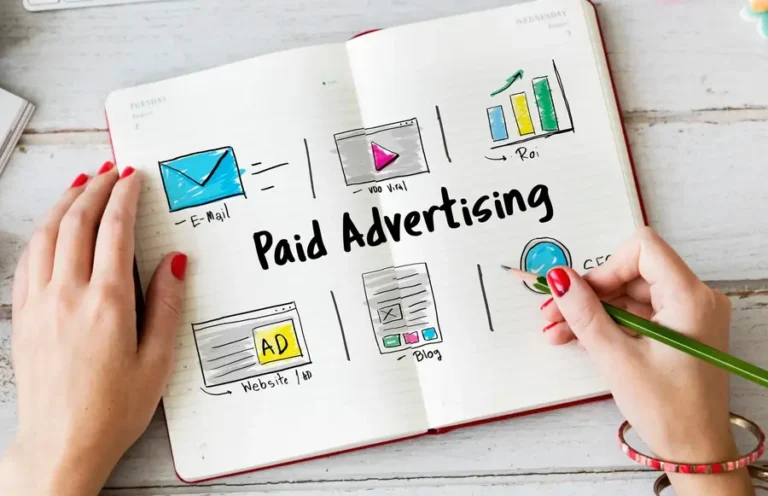In today’s fiercely competitive digital landscape, Pay-Per-Click (PPC) advertising has become an indispensable tool for businesses seeking immediate visibility and measurable results. Yet, simply running PPC campaigns isn’t enough – the real magic lies in optimization. Unlocking the power of PPC optimization can mean the difference between burning through your advertising budget and achieving remarkable ROI.
Consider this: According to recent studies, businesses make an average of $2 in revenue for every $1 they spend on Google Ads. However, top-performing accounts can achieve returns of $8 or more per dollar spent. This stark difference often comes down to one critical factor: optimization strategy.
Whether you’re a seasoned digital marketer or just starting your PPC journey, having a structured approach to optimization is crucial. Think of PPC optimization as fine-tuning a high-performance engine – each component needs to work in perfect harmony to achieve optimal results. This comprehensive checklist will serve as your roadmap to PPC success, covering everything from account structure to advanced bidding strategies.
What makes PPC optimization particularly challenging is its dynamic nature. The digital advertising landscape is constantly evolving, with:
- New features and capabilities being introduced regularly
- Changes in consumer behavior and preferences
- Shifting competitive landscapes
- Evolving platform algorithms and policies
- Emerging technologies and automation tools
Recent data shows that advertisers who regularly optimize their PPC campaigns experience up to 40% better performance compared to those who follow a “set it and forget it” approach. This statistic underscores the importance of having a systematic optimization strategy in place.
Throughout this guide, we’ll break down the essential elements of PPC optimization into actionable steps. We’ll explore proven strategies that have helped businesses across various industries achieve their advertising goals. From keyword optimization and ad copy refinement to landing page improvements and bid management, we’ll cover every crucial aspect that contributes to campaign success.
What sets this checklist apart is its practical approach. Rather than overwhelming you with theoretical concepts, we’ll focus on actionable insights that you can implement immediately. Each section will provide clear, step-by-step guidance, complemented by real-world examples and industry best practices.
As we dive deeper into each aspect of PPC optimization, remember that success in paid advertising isn’t about implementing every possible strategy – it’s about identifying and executing the right strategies for your specific goals and circumstances. This checklist will help you navigate these choices and build an optimization framework that drives consistent results.
Let’s begin this journey of transforming your PPC campaigns from good to exceptional, ensuring every advertising dollar works harder and smarter for your business. In the following sections, we’ll systematically explore each component of successful PPC optimization, providing you with the tools and knowledge needed to achieve breakthrough results.

Key Points for PPC Optimization Success
When it comes to unlocking the power of PPC optimization, understanding the fundamental elements that drive campaign success is crucial. Let’s dive into the essential key points that will help you transform your PPC campaigns from good to exceptional.
Table of Contents
Campaign Structure and Organization
A well-structured PPC campaign serves as the foundation for all optimization efforts. Consider these critical elements:
- Account Hierarchy: Organize your campaigns logically by product lines, services, or geographic locations
- Ad Group Segmentation: Create tightly themed ad groups with 15-20 relevant keywords each
- Keyword Match Types: Utilize a mix of exact, phrase, and broad match modified keywords strategically
- Negative Keywords: Maintain a comprehensive negative keyword list to prevent wasted spend
Budget Allocation and Bid Management
Effective resource allocation is essential for maximizing ROI in PPC campaigns. Focus on:
- Daily Budget Distribution: Allocate higher budgets to top-performing campaigns
- Bid Adjustments: Implement device, location, and time-of-day bid modifications based on performance data
- Automated Bidding Strategies: Choose the right automated bidding strategy aligned with your campaign goals
- Budget Pacing: Monitor daily spending to ensure consistent exposure throughout the month
Ad Copy and Landing Page Optimization
The success of your PPC campaigns heavily relies on compelling ad copy and optimized landing pages:
- Ad Copy Elements: Include compelling headlines, relevant keywords, clear CTAs, and unique selling propositions
- Extension Utilization: Implement all relevant ad extensions to maximize ad real estate
- Landing Page Relevance: Ensure landing pages directly match ad copy and user intent
- Conversion Optimization: Continuously test landing page elements to improve conversion rates
Performance Tracking and Analysis
Regular monitoring and analysis are crucial for ongoing optimization:
- Key Metrics: Track CTR, conversion rate, cost per conversion, and ROAS
- Quality Score Monitoring: Regularly check and improve quality scores for cost efficiency
- A/B Testing: Continuously test ad variations, landing pages, and bidding strategies
- Competition Analysis: Monitor auction insights and adjust strategy accordingly
Remember that successful PPC optimization is an ongoing process that requires constant attention and refinement. By focusing on these key points and regularly reviewing your campaign performance, you’ll be well-positioned to achieve and maintain optimal results in your PPC efforts.
As you implement these key points in your PPC optimization strategy, it’s important to maintain a systematic approach to testing and improvement. Consider creating a weekly or monthly checklist that incorporates all these elements to ensure consistent campaign management and optimization.
Moving forward, understanding how to implement these key points effectively will be crucial for your campaign’s success. Let’s explore how to put these principles into action with practical implementation strategies.

Best Practices for PPC Optimization
Successfully unlocking the power of PPC optimization requires adhering to proven best practices that have demonstrated consistent results across various industries. Let’s dive into the essential strategies that will help you maximize your PPC campaign performance and achieve better ROI.
Strategic Keyword Management
One of the fundamental best practices in PPC optimization is maintaining a well-organized keyword strategy. Start by implementing these crucial tactics:
- Regular Keyword Auditing: Conduct monthly reviews of your keyword performance and remove underperforming terms that waste budget
- Search Term Analysis: Monitor search term reports to identify new keyword opportunities and negative keyword candidates
- Match Type Optimization: Use a balanced mix of match types, starting broader and refining based on performance data
- Intent Alignment: Ensure keywords align with user intent and campaign goals to improve quality scores
Quality Score Optimization
Quality Score directly impacts your ad costs and positioning. Focus on these elements to maintain high quality scores:
- Landing Page Relevance: Create dedicated landing pages that directly correspond to ad content and keywords
- Ad Copy Relevance: Include target keywords in your ad copy while maintaining natural language flow
- Click-Through Rate (CTR) Improvement: Continuously test ad variations to increase CTR and historical performance metrics
Budget Management and Bidding Strategies
Effective budget allocation is crucial for PPC success. Implement these budgeting best practices:
- Day-Parting: Adjust bids based on time-of-day and day-of-week performance patterns
- Geographic Bid Adjustments: Modify bids for different locations based on performance data
- Device-Based Bidding: Optimize bids across devices according to conversion rates and user behavior
- Automated Bidding Strategies: Leverage machine learning-based bidding strategies while maintaining manual oversight
Regular Testing and Optimization
Continuous testing is essential for improving campaign performance. Focus on:
- Ad Copy Testing: Run A/B tests on headlines, descriptions, and calls-to-action
- Landing Page Testing: Experiment with different layouts, content, and conversion elements
- Extension Testing: Try various ad extensions to improve ad visibility and click-through rates
Remember that successful PPC optimization is an ongoing process that requires consistent attention and refinement. Keep detailed records of your tests and optimizations, and always base decisions on data rather than assumptions. Regular monitoring and adjustment of these best practices will help ensure your PPC campaigns continue to deliver optimal results.
By following these best practices systematically, you’ll be well on your way to unlocking the full potential of your PPC campaigns. Remember to stay current with industry trends and platform updates, as PPC best practices continue to evolve with new features and capabilities.
Monitoring and Reporting
Establish a robust monitoring and reporting system to track your optimization efforts:
- Key Performance Indicators (KPIs): Track essential metrics like conversion rate, cost per conversion, and ROAS
- Custom Reporting: Create automated reports that focus on your most important metrics
- Regular Performance Reviews: Schedule weekly or monthly performance reviews to identify trends and opportunities
- Attribution Modeling: Implement proper attribution models to understand the full impact of your PPC efforts

Conclusion
As we wrap up our comprehensive exploration of PPC optimization, it’s clear that success in paid advertising requires a strategic and methodical approach. Unlocking the power of PPC optimization isn’t just about following a checklist—it’s about understanding how each element works together to create a high-performing campaign that delivers measurable results.
Throughout this guide, we’ve covered essential aspects that form the foundation of successful PPC campaigns. Let’s recap the key takeaways that will help ensure your optimization efforts yield the best possible outcomes:
- Regular account auditing and performance monitoring are non-negotiable for maintaining campaign effectiveness
- Keyword optimization and negative keyword management form the backbone of targeted advertising
- Ad copy testing and refinement are crucial for improving click-through rates and conversion rates
- Landing page optimization directly impacts conversion success and ROI
- Bid management strategies must be continuously adjusted based on performance data
Remember that PPC optimization is not a one-time task but an ongoing process that requires dedication and attention to detail. The digital advertising landscape is constantly evolving, and staying ahead means being willing to adapt and refine your strategies based on new data and emerging trends.
Success in PPC requires:
- Consistent monitoring and analysis of campaign metrics
- Regular implementation of testing and optimization techniques
- Understanding your target audience and their behaviors
- Ability to adapt to market changes and competition
- Commitment to continuous learning and improvement
As you implement the strategies and techniques outlined in this comprehensive checklist, remember that patience is key. While some optimizations may show immediate results, others may take time to demonstrate their full impact. The key is to maintain a balanced approach between making data-driven decisions and allowing sufficient time for meaningful patterns to emerge.
Moving forward, we encourage you to:
- Create a structured optimization schedule that works for your business
- Document your optimization efforts and their results
- Stay informed about new PPC features and best practices
- Build on your successes and learn from your setbacks
By following this comprehensive checklist for success and maintaining a committed approach to optimization, you’ll be well-positioned to achieve your PPC advertising goals. Remember that even small improvements can lead to significant gains when compounded over time.
Take action today by implementing these optimization strategies, and you’ll be well on your way to maximizing your PPC campaign performance and achieving a stronger return on your advertising investment. The power to transform your PPC campaigns lies in your hands—use this knowledge wisely and consistently to drive your business forward in the competitive digital landscape.
